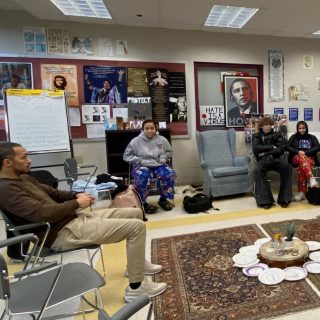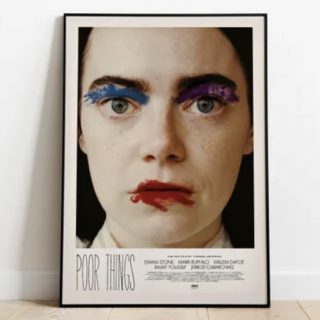Western Mass. a hub of sustainable architecture

Andrew Webster never went to architecture school, but he now runs an environmentally sustainable architectural firm in Amherst, MA. He knew from the beginning he was interested in the environment, so he got a job at an architectural firm and learned on the job.
From there he started his own company, studioWEBSTER. While Massachusetts laws do not allow him to be a certified architect in MA, he is certified in New Hampshire, Maine, and other surrounding states. Luckily for Webster, Massachusetts law does not state that you have to be an architect to design a house, only that you cannot design commercial buildings.
Sustainable buildings are structures that are built or furnished in such a way that they are as environmentally sustainable as possible. As defined by the U.S. Environmental Protection Agency (EPA), “Green building is the practice of creating structures and using processes that are environmentally responsible and resource-efficient throughout a building’s life-cycle from siting to design, construction, operation, maintenance, renovation, and deconstruction. This practice expands and complements the classical building design concerns of economy, utility, durability, and comfort.”
There are a few different sustainability certification systems that people can model their homes to match. One is the LEED green building system. LEED is the acronym for Leadership in Energy and Environmental Design. The LEED system is a point system based on prerequisites that address carbon, energy, water, waste, transportation, materials, health, and indoor environmental quality.
Another certification system is the Living Building Challenge. It is a sustainable building certification that is based on seven performance categories or “petals.” Those petals include place, water, energy, health & happiness, materials, and equity & beauty. When certifying a structure for the living building challenge it must be categorized under one of their four typologies. Those typologies are new building, existing building, interior, and landscape or infrastructure. You can see the exact details at the International Living Future Institute website.
An example of a living building in Amherst is the Hitchcock Center for the Environment. The Hitchcock Center did not start out in the building that you can see today, in fact, that building took eight long years of dedicated research to just plan.
At first, the designers were looking at building it according to the LEED certification, but they found that the LEED certification was too much of a “one and done” sort of deal for them. In fact, many of the people working in LEED-certified buildings didn’t even know that the building was LEED certified.
The Hitchcock leaders wanted to have the building be an active learning center, where people of all ages could learn from it, so they chose the Living Building system. The Hitchock Center is now one of 25 certified living buildings in the world.
The architects that I spoke to, Webster and Tullio Inglese from Tia Architecture, which is also in Amherst, agree that retrofitting houses is just as important. Sometimes even more so than building new sustainable houses and buildings since homeowners are able to make the retrofitted houses just as sustainable as a new building or sometimes even more. “Getting a house that’s already built and making it the best you can seems like the most sustainable work you can do,” said Webster.
Retrofitting a house consists of gutting out and removing all the old non-sustainable materials and appliances. Those can include stoves and fridges, heating/air conditioning, water heating/cooling, and windows. The builders will replace all the old with new, state-of-the-art, sustainable materials and appliances.
Putting in new materials can also be beneficial to workers since many old, traditionally used building materials are toxic. When building the new Hitchcock Center on Hampshire College grounds, the constructors, Wright Builders, also benefited by using non-toxic materials. Many materials, such as CCA (Chromated Copper Arsenic), that are typically put in pressure-treated woods, are known to cause prostate cancer.
Along with using non-toxic materials, the people planning the new Hitchcock Center decided to source materials together with the R.W. Kerns Center. The R.W. Kerns Center is another living building in Amherst, that was being constructed during the same time as the Hitchcock Center. They did that because finding sustainable materials is harder than just finding traditional materials, mainly because there are fewer people making them. So it was easier to work together to make sure that they got all the materials that they needed.
There are many ways for the average person to be more sustainable, but unfortunately, most of them require an investment. However, after the initial investment, sustainable features can pay for themselves. Some small projects that a person could do just themselves are getting LED light bulbs and replacing their showerheads and faucets to ones that use less water. Some larger projects could include installing solar panels, replacing a gas stove with an induction cooktop, and replacing old windows.
There are many changes people can make to their lifestyle to be more sustainable including taking shorter showers, recycling, patching old clothes, being a vegetarian, composting, using reusable bags at the grocery store, biking places when possible, and many more.
Another popular option is to get an electric car. “We are seeing more electrification of heating and cooling [and] people are talking a lot these days about induction cooking,” said Webster. “And people are buying electric cars.”
While electric cars can be very expensive, there are more and more car companies that are coming out with more affordable versions, and with the price of gas these days, they can help save a big buck. Some companies producing electric cars are Tesla, which is the largest electric car company in the world, as well as Rivian, Nissan, and Volvo along with many others.
There are also state and federal incentives to buy an electric car. The MORE-EV program can provide a rebate of up to 3,500 dollars on the purchase or lease of some electric vehicles as well as up to 1,500 dollars for plug-in hybrid vehicles. The Federal Plug-in Electric Vehicle Credit can provide up to $7,500 in tax credit toward the purchase or lease of an electric vehicle. To learn more you can visit the National Grid Electric Vehicle Hub .
Modern sustainable houses do not have to be the sleek simplistic look that many associate with them. They can be in any shape or form. “One of the petals of the Living Building challenge is to make your house be part of the landscape,” said Colleen Kelley, when discussing the design aspect of the Living Building Challenge.
“One of the goals is to not make everything be glass or modern,” added Kelley, noting that it’s important to understand a sustainable building can take any shape or form. Specifically, if we’re talking about Amherst, where the vibe is more rustic farmhouse than a sleek simplistic new build.
This is also important because many of the new buildings that are being built have large windows, and while they are beneficial in that they let in lots of natural light, they are also a danger to birds. Especially when they are along migration routes. There are ways to prevent bird crashes, two popular methods are bird glyphs and window stripes.
There are many different predictions for the future concerning sustainability, from our wonderful little town of Amherst, Massachusetts to around the world. In 10-20 years, Webster thinks we will be off fossil fuels.
Tullio Inglese from Tia Architecture thinks downtown Amherst will continue to grow to allow people to live closer to downtown. “Buildings will get taller and we will all be in town living happily ever after,” said Inglese
Learning to be sustainable with the materials we have on our earth is one of the most important things that we can do.“We want people to learn solutions from nature, biomimicry” said Colleen Kelley, the education director at the Hitchcock Center.
Biomimicry is when we learn from the world around us, which has been existing for far longer than we have, and we base our designs on what we learn.
In fact, there is the Biomimicry Institute in Missoula, Montana whose purpose is to “naturalize biomimicry in the culture by promoting the transfer of ideas, designs, and strategies from biology to sustainable systems design.” On their website, you can find many examples and useful information about design solutions derived from researching how nature did it first. An example of this is spider silk inspiring a new fabric material that uses less energy and resources to produce than traditional materials. To find out more you can visit biomimicry.org or asknature.org.
There are people working on sustainability all around the world. In fact, Tia Architects are proposing to build the first 3-D City in Cobar, Australia. They are planning to call it Andromeda. They plan to build many like it all around the world. “These cities will save vast amounts of energy and help preserve the biosphere,” says Inglese.
There are also many buildings that have already been built. After all, environmental sustainability is not a new subject. Some famous ones are the Bank of America Tower in New York, the Parkroyal Collection Pickering in Singapore, and the Pearl River Tower in Guangzhou, China.
Along with the high and mighty sustainable buildings around the world, we have two right here in Amherst! The aforementioned Hitchcock Center, the RW Kerns Center at Hampshire College, and the Smith College Bechtel field station.
How sustainable we as a species are could determine the survival of humanity, Webster said. “In 100-150 years we will have either figured out the climate problem or have totally failed,” he added.














